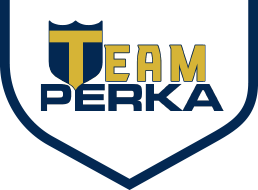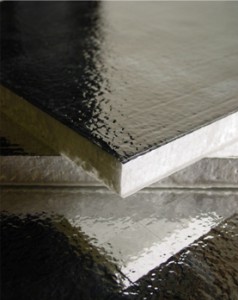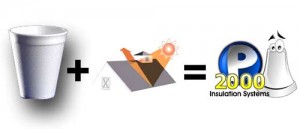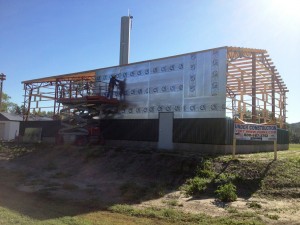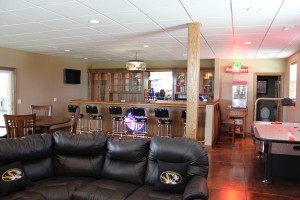We recently received a GREAT question that lead to a fairly well presented and quite concise reply.
So we thought it would be a good thing to share it as part of this blog effort aiming at EDUCATION as much as any form of product promotion!!
J.C. Asked this question on a FACEBOOK post of building project we were doing: https://www.facebook.com/media/set/?set=a.10152168635999104.1073741866.254254764103&type=1&comment_id=32159373&offset=0&total_comments=4¬if_t=photo_album_comment
What’s the difference between the insulation you sell with your buildings vs a spray foam?
PERKA BUILDINGS REPLY:
“Great question J.C. Actually on this particular building, for budget reasons, the insulation supplied was a lower cost (and unfortunately also a lower performing) conventional FIBERGLASS batt insulation with vinyl backing. This insulation type has the traditional R-Values that most people are accustom to having. The unfortunate part about that is it pretty much ONLY addresses conduction heat loss/gains, with some resistance to convection, (re: from the overlap). So while it may meet “codes” for R-value — in the big scheme of things it generally under-performs compared to other types.
The other main insulation PERKA BUILDINGS offers is affectionately known as P2000 Insulation. It is comprised of an Expanded Poly Styrene core board, of varying thicknesses, with either both sides covered with MYLAR or one with Mylar and one with a strong white Vinyl Barrier.
What this does, in effect, is directly addresses all three forms of heat loss/gains. While it does not actually carry a significant R-value like fiberglass does – it still quite effectively “stops” conduction much like how a foam cup prevents our hand from being scolded with hot coffee in it. (And that is with only 1/8″ thick uncovered EPS – we typically use 5/8″ to an 1″ WITH COVERINGS!!).
Secondly to address Convection we TAPE ALL JOINTS with the same MYLAR type material and a strong DUCT TYPE TAPE on the white side. THAT pretty much will SEAL all the possible ‘cracks’ for any convection air flow.
Finally with a MYLAR (plastic) reflective material on at least ONE side – we also, very effectively, control heat loss/gains from RADIATION. i.e. in winter we KEEP any radiant type energy INSIDE the building and in summer prevent the HIGHLY penetrating SUN rays from virtually cooking everything inside!
So with our best offer, the P2000, you get a material that can address ALL THREE forms of heat transfer, and all with just ONE APPLICATION.
Note also that the EPS that is used in P2000, is a CLOSED cell type of foam – which has virtually an infinite shelf life from decomposition or drying.
Now, depending on the type of SPRAY FOAM you get – you will address at least two of the heat transfer types… (Note however some foams are not closed cell and can thus dry up and decompose over time.) A thick enough foam will give great R-value and being fully applied throughout all the nooks and crannies, will definitely prevent convection heat transfers. Unfortunately without a radiant barrier of some sort, be it MYLAR or aluminum… you will still experience radiant heat penetrations.
One last note on the difference between MYLAR and ALUMINUM radiant barriers. Both can more than adequately reflect the radiation from any heat source, the main difference is that aluminum is also a METAL and can add BACK some conduction properties. While MYLAR is more like a PLASTIC (and by the way is also the same material used by NASA for most space insulators)… it actually has shown experiential properties of DIFFUSING the radiant heat as much as reflecting it back OUT!
One added thought here: ADD to all these great benefits and features of a great insulation material like P2000 – a building that uses WOOD for the purlin/girt runs and you get an ADDED Thermo Break from wood being a HUGELY less (if significantly) at all conductor especially as compared to STEEL. So this will also great help with your overall building’s insulation-ability!
Make sense? If you have ANY questions about any of this – feel free to call and speak to any TEAM PERKA Mate. It is worth understanding this as it can literally save you hundreds of dollars in not only your installation costs but your overall energy costs as well!
Stay comfortable friends!!
